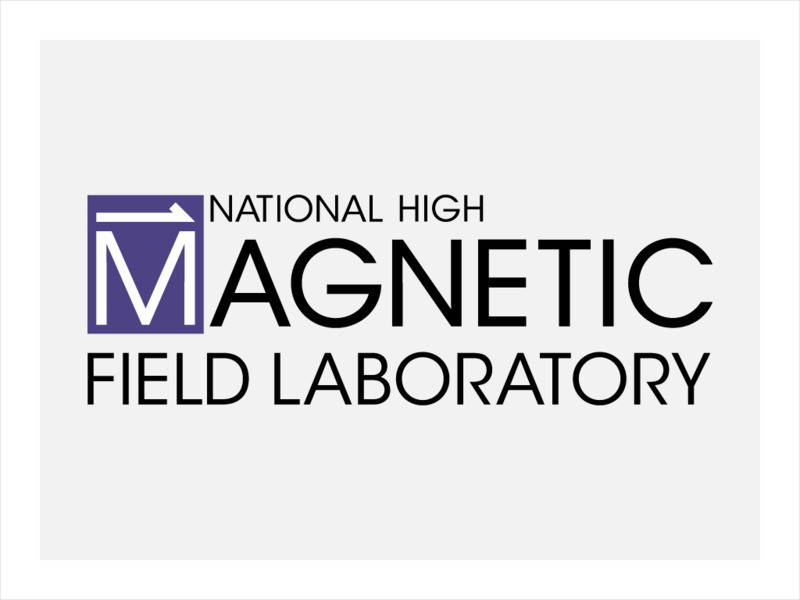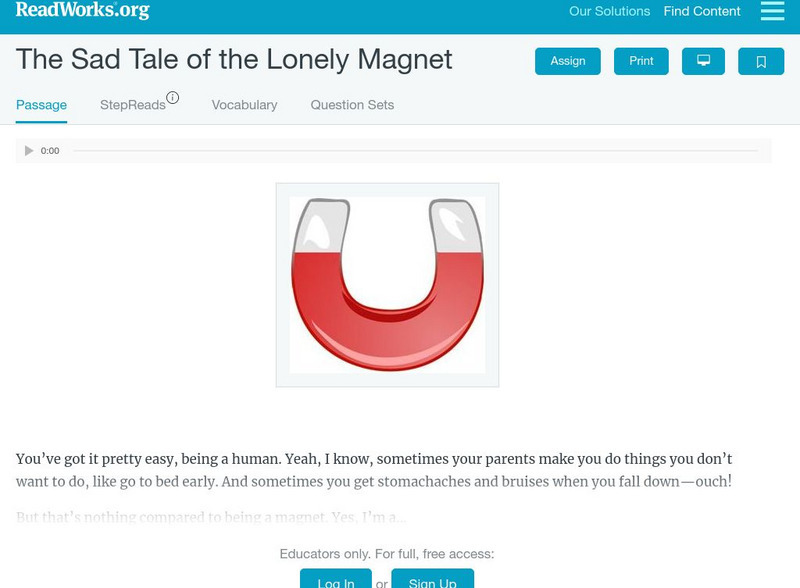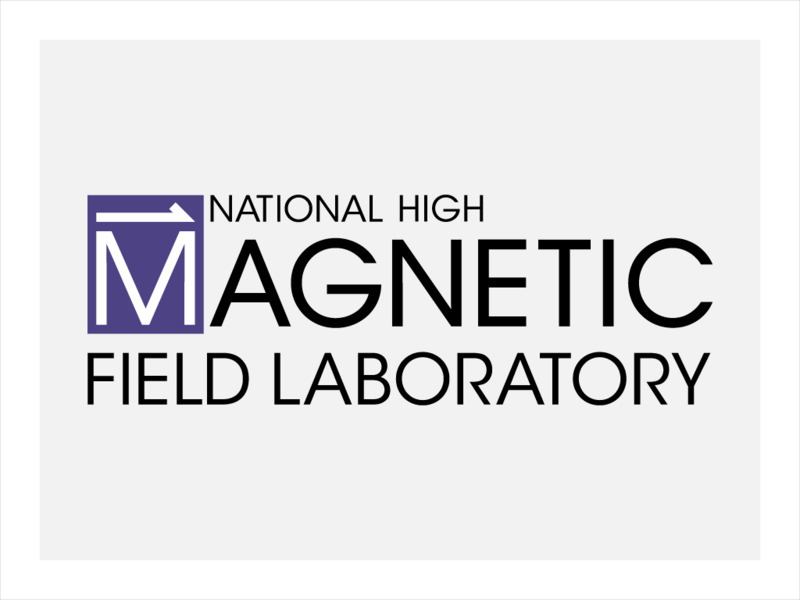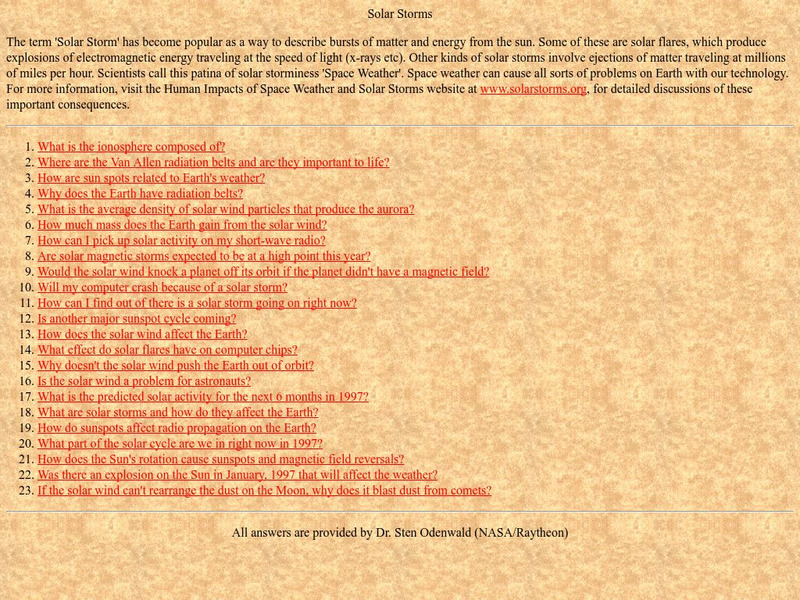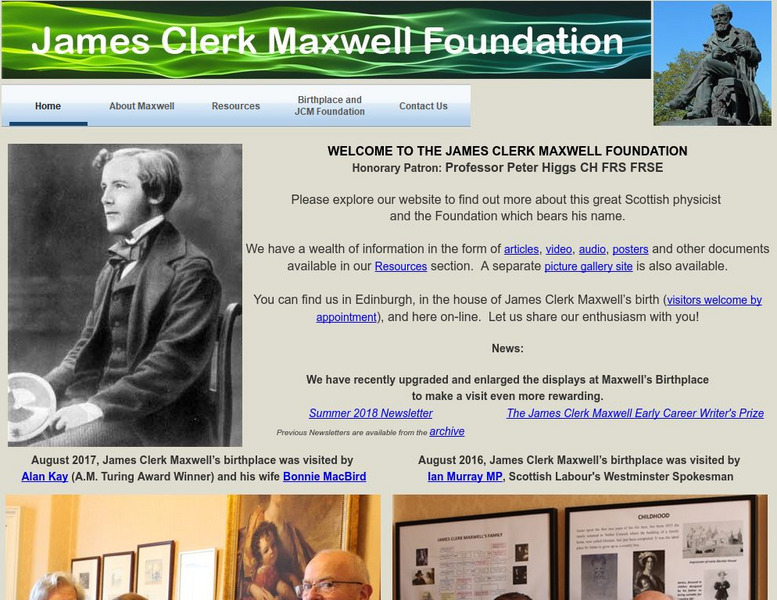Hi, what do you want to do?
University of Minnesota
University of Minnesota: Ships: Science & Religion of Michael Faraday
Here's a whole different look at Faraday. His religion, Sandemanian, greatly influenced both his life and his science. This article looks deeply at that aspect of his life.
National High Magnetic Field Laboratory
Magnet Academy: Timeline of Electricity and Magnetism: 1900 1909
Albert Einstein publishes his special theory of relativity and his theory on the quantum nature of light, which he identified as both a particle and a wave. With ever new appliances, electricity begins to transform everyday life.
CK-12 Foundation
Ck 12: Physical Science: Using Earth's Magnetic Field
[Free Registration/Login may be required to access all resource tools.] The Earth's magnetic field and how it protects life on Earth, and how it is used for navigation.
CK-12 Foundation
Ck 12: Third Grade Science
This customizable digital textbook covers topics related to third-grade science. It is Next Generation Science Standards (NGSS) aligned.
Discovery Education
Discovery Education: Science of Everyday Life: Interaction at a Distance [Pdf]
An experiment where students investigate the strength of magnets. This site includes a lesson plan with both teacher and student information for completing the experiment.
Math Science Nucleus
I. Science Ma Te: Integrating Science, Math and Technology
This site offers a wealth of online textbook-related materials that encourage the discovery of science in the world around us. Enter the site to access material on specific topics. Each section contains reading material (complete with...
Read Works
Read Works: The Sad Tale of the Lonely Magnet
[Free Registration/Login Required] A literary text about life from a magnet's point of view. A question sheet is available to help students build skills in reading comprehension.
National High Magnetic Field Laboratory
Magnet Academy: John Ambrose Fleming
John Ambrose Fleming was an electronics pioneer who invented the oscillation valve, or vacuum tube, a device that would help make radios, televisions, telephones and even early electronic computers possible. A brilliant innovator,...
National High Magnetic Field Laboratory
Magnet Academy: James Joule
James Prescott Joule experimented with engines, electricity and heat throughout his life. Joule's findings resulted in his development of the mechanical theory of heat and Joule's law, which quantitatively describes the rate at which...
NASA
Nasa: Image Science Center: Ask the Space Scientist Earth
Site from NASA contains a collection of 91 questions pertaining to the Earth's atmosphere, magnetic field, ionosphere, rotation and origin of life.
Exploratorium
Exploratorium: Snacks
Exploratorium's snacks aren't edible, but they are good! Use your science skills to discover gravity, learn about biology, do fun experiments.
Other
The James Clerk Maxwell Foundation
The home page of the The James Clerk Maxwell Foundation, a charitable foundation to commemorate the life and work of James Clerk Maxwell. View Maxwell's house and read about the personal life of this notable scientist.
Discovery Education
Discovery Education: Build Your Own Perpetual Motion Machine [Pdf]
A lesson for students to explore the conversion of energy from electrical energy to kinetic energy by constructing a homopolar motor. Also by constructing the motor, students can investigate magnetism, electricity, and RPM.
Read Works
Read Works: Traveling Turtles
[Free Registration/Login Required] An informational text that asks the reader to make predictions about the lives of loggerhead sea turtles. A question sheet is available to help students build skills in reading comprehension.
University of Glasgow
University of Glasgow: Kelvin Collection
This collection provides links to a variety of information about William Thomson (Lord) Calvin including rare books and an in-depth biography on the life and works of Lord Kelvin. Read about his childhood and education, his many...
San Jose State University
Sjsu Virtual History: Joseph Henry
A concise biography on Joseph Henry gives details on his education; his experimental work in chemistry, electricity, and magnetism; and the many board positions he held throughout his life.






